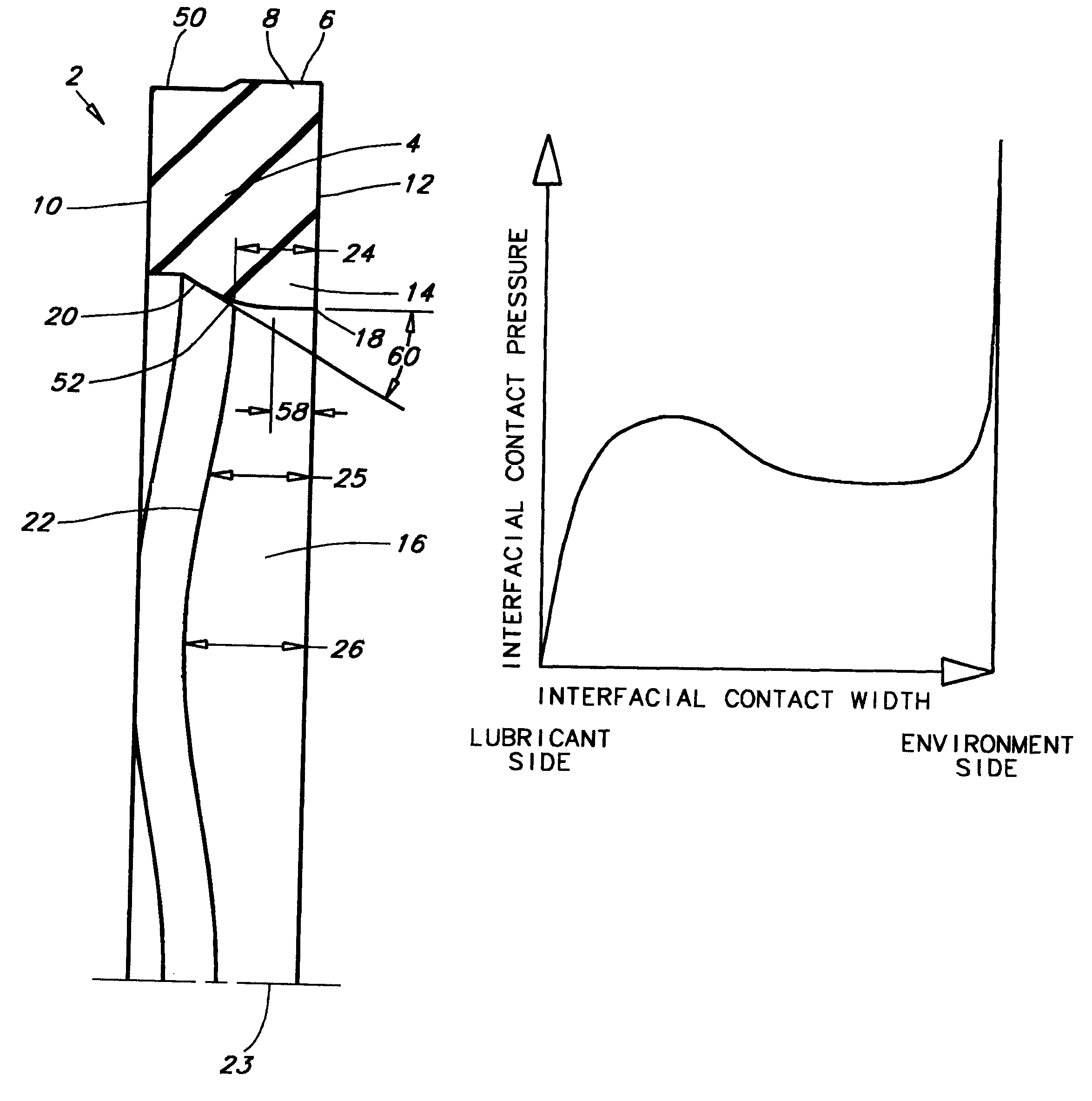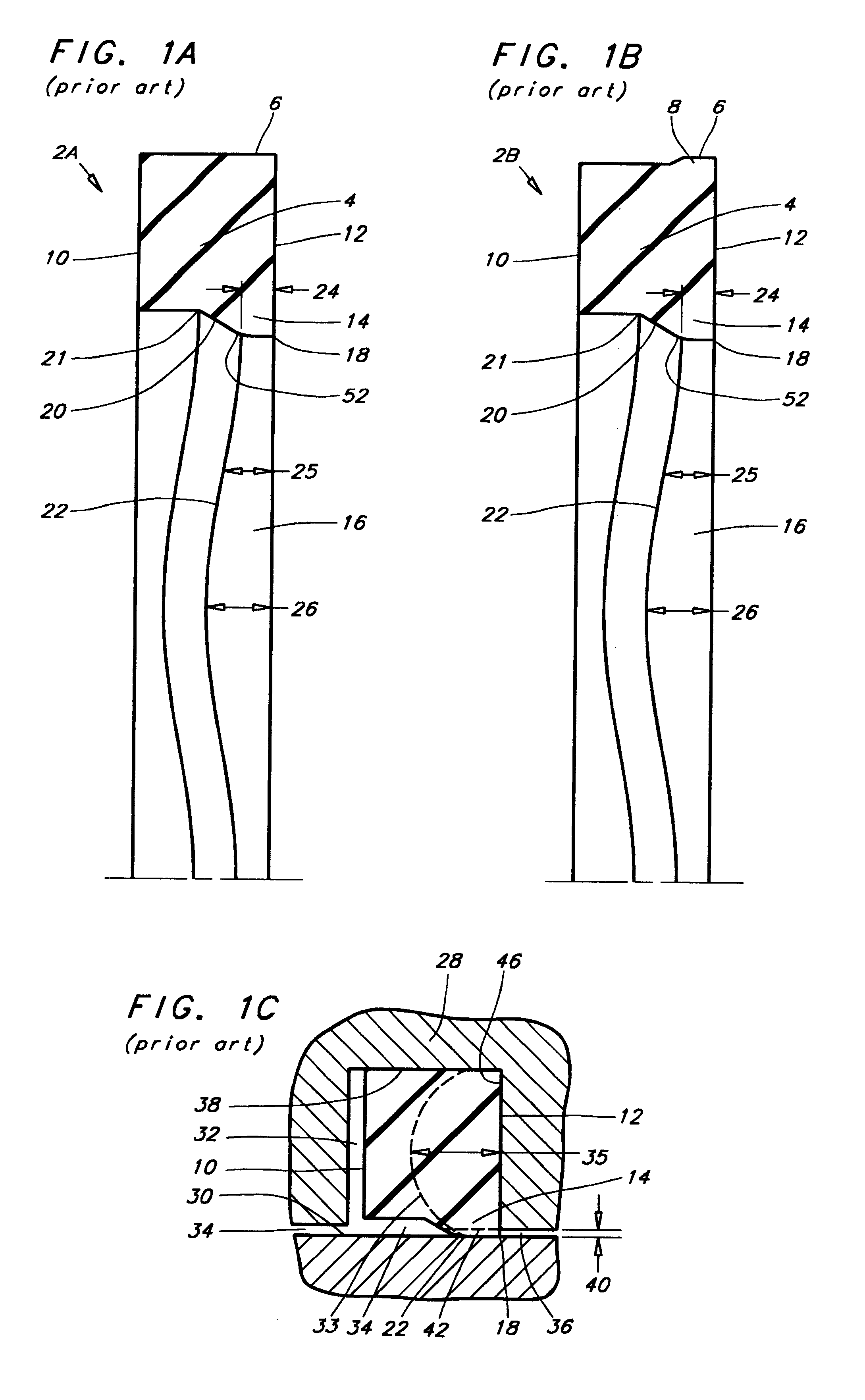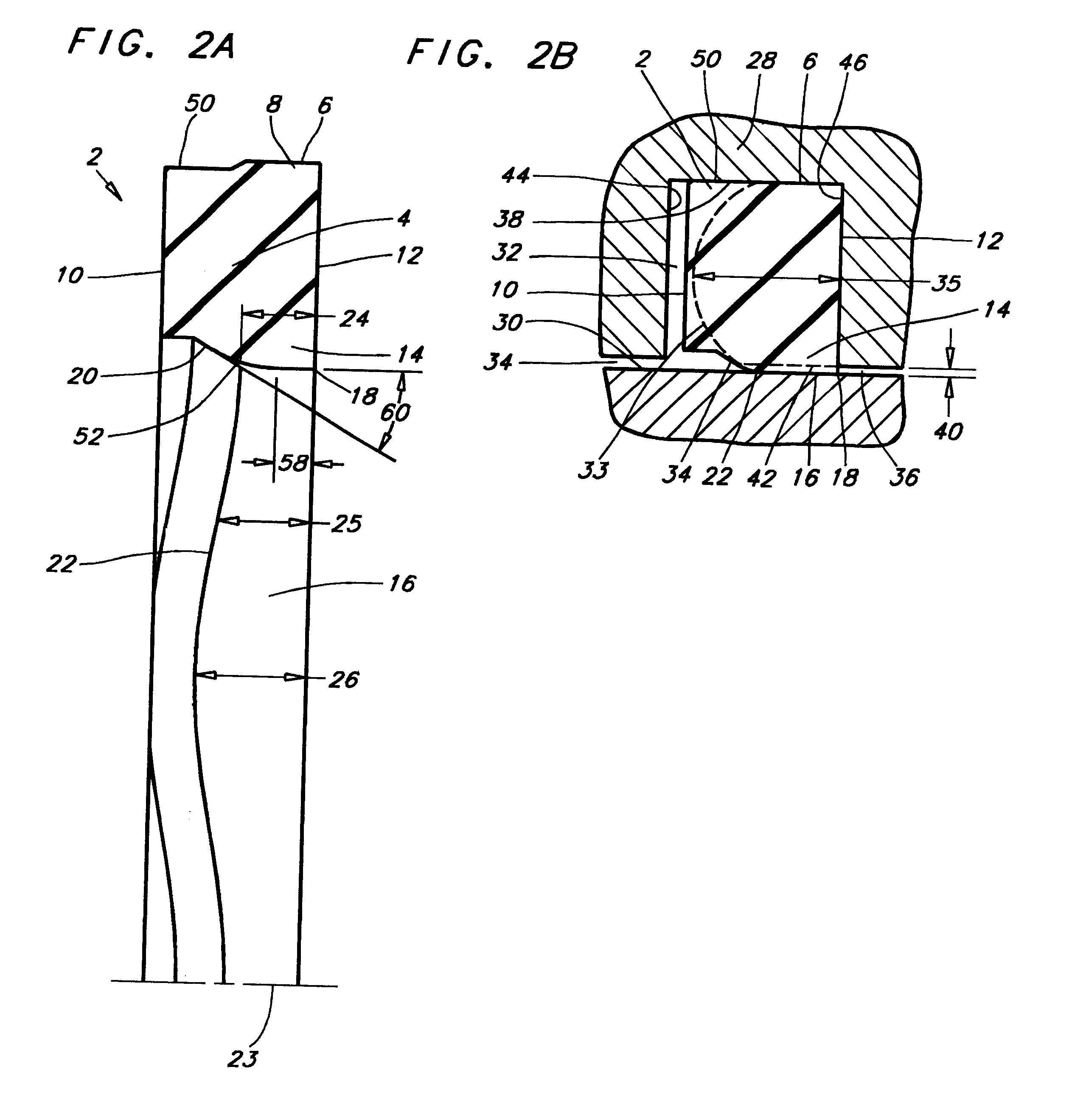Hydrodynamic seal with improved extrusion abrasion and twist resistance
a technology of extrusion abrasion and twist resistance, applied in the direction of engine seals, mechanical devices, engine components, etc., can solve the problems of reduced modulus of seal materials, reduced extrusion resistance, and failure of seals
- Summary
- Abstract
- Description
- Claims
- Application Information
AI Technical Summary
Problems solved by technology
Method used
Image
Examples
Embodiment Construction
The present invention is a hydrodynamically lubricated compression--type rotary seal that is suitable for lubricant retention and environmental exclusion. It has been engineered such that it's geometry, interfacial contact pressure, and response to relative rotary motion combine to generate a hydrodynamic lubricant film which separates the seal from the mating relatively rotatable surface, and combine the exclude contaminants, and thereby promote long sealing life. The thickness of the film is proportional to the interfacial contact pressure and also dependent on other factors, such as the installed shape of the hydrodynamic geometry and the viscosity of the lubricant. The seals of the present invention are bi-directional; that is to say they achieve efficient hydrodynamic lubrication in response to either clockwise or counter-clockwise relative rotation.
The invention is directed at prolonging seal life in applications where the lubricant pressure may be significantly higher than th...
PUM
 Login to View More
Login to View More Abstract
Description
Claims
Application Information
 Login to View More
Login to View More - R&D
- Intellectual Property
- Life Sciences
- Materials
- Tech Scout
- Unparalleled Data Quality
- Higher Quality Content
- 60% Fewer Hallucinations
Browse by: Latest US Patents, China's latest patents, Technical Efficacy Thesaurus, Application Domain, Technology Topic, Popular Technical Reports.
© 2025 PatSnap. All rights reserved.Legal|Privacy policy|Modern Slavery Act Transparency Statement|Sitemap|About US| Contact US: help@patsnap.com



